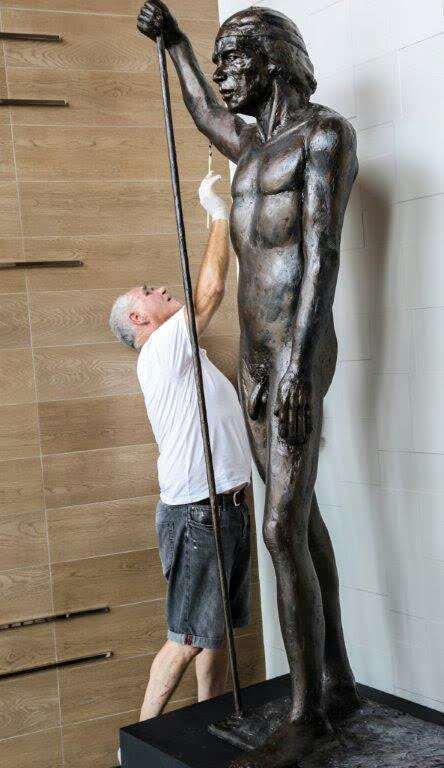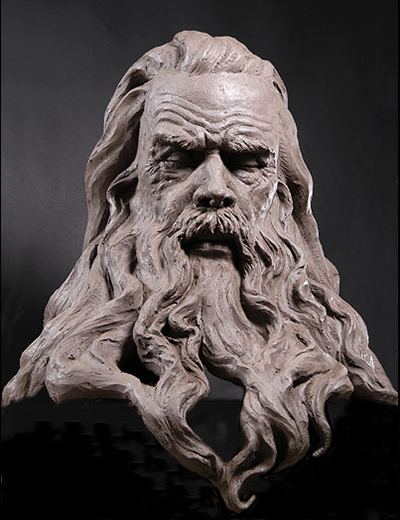Artistic Evolution: From Classic to Modern with Bronze Sculptures
The Evolution of Sculptures: From Old to Modern
The Advancement of Sculptures: From Old to Modern. Equine Sculptures.
Sculpture, among the oldest types of art, has actually been an important part of human people for millennia. From the old civilizations of Egypt and Greece to the modern-day age, sculptures have actually developed, showing changes in creative strategies, materials, and cultural impacts. This trip with time traces the development of sculptures, checking out the changes in vogue, topic, and artistic expression.
Beginning with the ancient globe, sculptures crafted from stone and later bronze recorded the essence of deities, leaders, and day-to-day life. The Renaissance duration witnessed a revival of classic sculpting methods, as musicians looked for to mimic the stylish kinds of ancient Greek and Roman sculptures (Robert C Hitchcock Sculptor). In the contemporary era, musicians challenged standard boundaries, welcoming abstraction and testing with new materials
This expedition will certainly explore the varied evolution of sculptures, exposing the abundant tapestry of creative expression throughout various durations and cultures.

Old Sculptures: From Stone to Bronze
Old sculptures transitioned from being sculpted out of stone to being cast in bronze. This shift noted a considerable development in the art of sculpture, permitting greater improvement and detail in the ended up jobs. Rock sculptures, while outstanding in their very own right, were limited by the nature of the material. Stone needed comprehensive sculpting and shaping, frequently causing a more streamlined representation of the topic.
The introduction of bronze as a medium for sculptures brought around a revolution in imaginative expression. Bronze used artists the possibility to produce realistic and complex kinds that were not possible with stone. The procedure of casting bronze enabled the development of multiple duplicates of a sculpture, enabling bigger circulation and preservation of these creative work of arts.
The shift from stone to bronze likewise saw a shift in the subject of sculptures. While rock sculptures predominantly depicted gods, goddesses, and mythical numbers, bronze sculptures began to show a more comprehensive variety of topics, consisting of day-to-day individuals and pets. This growth of subject showcased the flexibility and flexibility of the bronze tool.
Renaissance Rebirth: Shaping in the Classic Style
The Renaissance rebirth of sculpture experienced a revival in the classic style, structure upon the developments made during the shift from stone to bronze in old sculptures. Throughout this period, musicians looked for to recreate the classic aesthetic and perfects of appeal that were prevalent in ancient Greek and Roman sculptures.
One of the vital features of the Renaissance resurgence was the emphasis on naturalism and the human kind. Carvers like Donatello and Michelangelo strove to record the physiological details and expressions of their topics with unmatched accuracy. They examined the human body and included their observations right into their sculptures, leading to practical and realistic depictions.
One more important facet of the Renaissance resurgence was the expedition of point of view and deepness. Artists made use of methods such as contrapposto, where the weight of the body is changed to one side, developing a sense of activity and dynamism. They also try out different materials, including marble and bronze, to accomplish a degree of refinement and details in their sculptures.

Innovation and the Avant-Garde: Damaging Traditional Borders
Throughout the Modernism and Avant-Garde motions, artists pushed the borders of conventional creative conventions. This duration, which emerged in the late 19th and early 20th centuries, saw a dramatic shift in the means artists approached sculpture. Denying the notion of art as simple imitation, modernist artists sought to check out brand-new forms, materials, and concepts.
Among the essential attributes of modernist sculpture was the emphasis on abstraction. Artists moved far from realistic depictions and instead concentrated on catching the significance of the subject through simplified types and geometric forms. This separation from traditional depiction allowed artists to reveal their feelings and ideas in a much more individual and subjective fashion.

Contemporary Sculptures: Exploring New Materials and Concepts
With a focus on exploring new products and principles, modern sculptures have actually transformed the area of art. Artists today are pushing the boundaries of standard sculpture by trying out and making use of cutting-edge products with abstract principles. These sculptures test traditional concepts of meaning, form, and materiality, welcoming customers to take part in a thought-provoking and new artistic experience.
Contemporary sculptors are welcoming a wide variety of products, consisting of plastic, glass, metal, and even natural issue. They are not limited to the conventional medium of rock or clay, enabling better freedom of speech and experimentation. This change in the direction of unique materials has actually opened new possibilities for musicians to produce sculptures that are dynamic, interactive, and aesthetically striking.
Along with exploring brand-new materials, contemporary sculptures additionally look into complicated and abstract ideas. Musicians are currently exploring themes such as identification, social concerns, and the setting, utilizing sculpture as an effective tool for social commentary and self-questioning. These sculptures challenge customers to think seriously and engage with art on a much deeper level, stimulating conversations and prompting emotional feedbacks.
Worldwide Influences: Sculptural Customs From Around the Globe
Sculptural customs from various areas of the world have considerably shaped the advancement of sculptures throughout background. The worldwide impacts on sculpture have varied and have added to the splendor and range of imaginative expressions. From the ancient civilizations of Egypt, Greece, and Rome to the complex carvings of Oriental societies, each area has created its distinct sculptural practices that have influenced musicians throughout time.
In ancient Egypt, sculptures were produced primarily for funerary and spiritual purposes. The legendary sculptures of gods and pharaohs, such as the Great Sphinx and the breast of Queen Nefertiti, showcase the Egyptians' mastery of rock sculpting and their belief in the afterlife.

In old Rome, sculpture served both political check these guys out and imaginative functions. Roman sculptures frequently illustrated emperors, generals, and mythical figures, showing the power and splendour of the empire. The marble statuary of Augustus of Prima Porta and the huge Arch of Constantine are notable examples of Roman sculptural accomplishments.
Eastern sculptural practices, specifically in India, China, and Japan, have likewise had a profound impact on the evolution of sculptures. Japanese sculptures, influenced by Buddhism, stress simpleness and harmony, seen in the tranquil statuaries of Buddha and the classy art of bonsai.
The international impacts on sculpture remain to progress in the contemporary era. Artists today draw motivation from various sculptural traditions, including brand-new products, techniques, and principles to develop ingenious and thought-provoking artworks. The fusion of different cultural impacts has given surge to a dynamic and diverse sculptural landscape, reflecting the interconnectedness of our international culture. As we want to the future, it is certain that the international impacts on sculpture will proceed to shape and redefine this old art form.
Final Thought
Finally, the advancement of sculptures has seen a change from ancient rock and bronze functions to the classic revival throughout the Renaissance. This was followed by the breaking of traditional limits via modernism and the progressive movement. Today, modern sculptures explore new products and principles, while also attracting inspiration from worldwide sculptural practices. The journey of sculptures shows the ever-changing imaginative expressions and cultural impacts throughout background.
From the old people of Egypt and Greece to the modern age, sculptures have actually evolved, showing adjustments in artistic techniques, materials, and cultural impacts.Starting with the old globe, sculptures crafted from stone and later bronze caught the significance of divine beings, leaders, and day-to-day life.Old sculptures transitioned from being sculpted out of rock to being cast in bronze. While rock sculptures primarily shown gods, goddesses, and mythological figures, bronze sculptures started to show a more comprehensive array of topics, including everyday people and animals.In final thought, the development of sculptures has actually seen a change from old stone and bronze functions to the classical rebirth throughout the Renaissance.